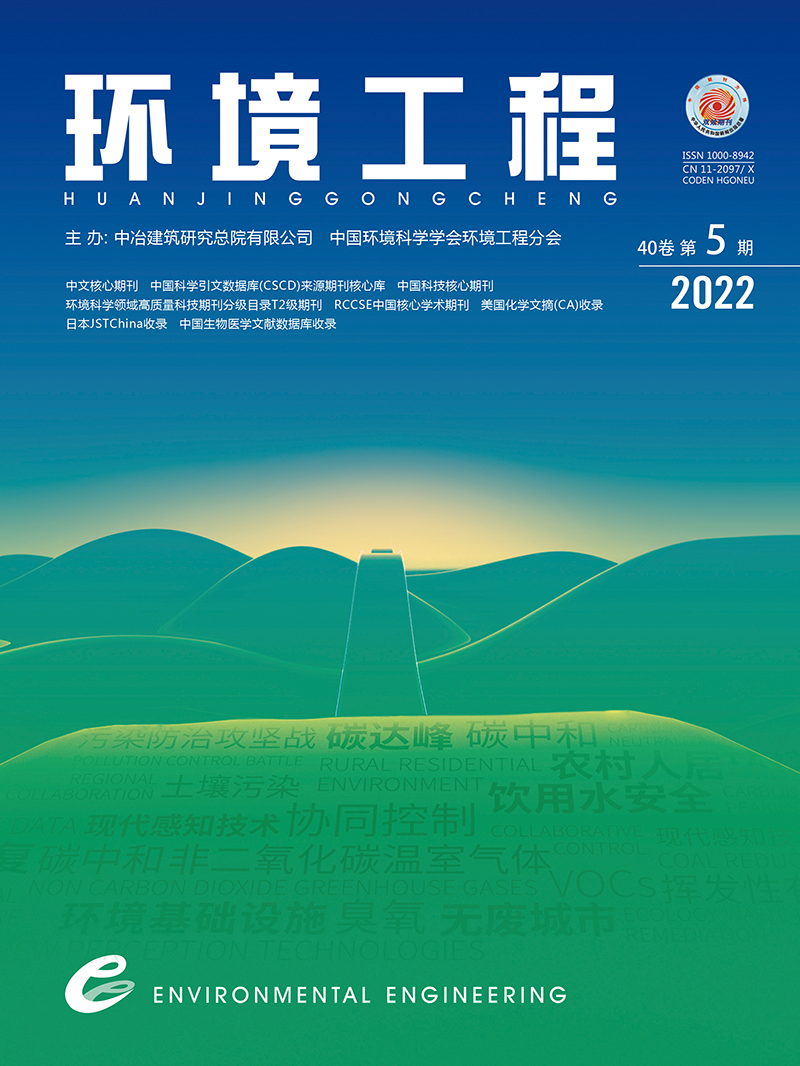| [1] |
刘小明.城市交通与管理——中国城市交通科学发展之路[J].交通运输系统工程与信息,2010,10(6):11-21.
|
| [2] |
JIE L,van ZUYLEN H J.Road traffic in China[J].Procedia-Social and Behavioral Sciences,2014,111:107-116.
|
| [3] |
中国城市轨道协会.城市轨道交通2020年度统计和分析报告[EB/OL].https://www.camet.org.cn/tjxx/7647.2020-04
-10.
|
| [4] |
深圳市地铁集团有限公司.深圳市地铁集团有限公司2019年年度报告[EB/OL].https://www.szmc.net/jituagaikuang/touzizheguanxi/niandubaogao/202006/81590.html.2020
-06-30.
|
| [5] |
毛睿昌.基于LCA的城市交通基础设施环境影响分析研究[D].深圳:深圳大学,2017.
|
| [6] |
MAO R C,BAO Y,DUAN H B,et al.Global urban subway development,construction material stocks,and embodied carbon emissions[J].Humanities and Social Sciences Communications,2021,8:1-11.
|
| [7] |
GUAN B W,LIU X H,ZHANG T,et al.Energy consumption of subway stations in China:data and influencing factors[J].Sustainable Cities and Society,2018,43:451-461.
|
| [8] |
LI Y,HE Q,LUO X,et al.Calculation of life-cycle greenhouse gas emissions of urban rail transit systems:a case study of Shanghai Metro[J].Resources Conservation and Recycling,2016,128:451-457.
|
| [9] |
F DEL PERO,DELOGU M,PIERINI M,et al.Life Cycle Assessment of a heavy metro train[J].Journal of Cleaner Production,2015,87:787-799.
|
| [10] |
LIU M H,JIA S Y,LI P,et al.Predicting GHG emissions from subway lines in the planning stage on a city level[J].Journal of Cleaner Production,2020,259:120823.
|
| [11] |
SAXE S,MILLER E,GUTHRIE P.The net greenhouse gas impact of the Sheppard Subway Line[J].Transportation Research Part D:Transport and Environment,2017,51:261-275.
|
| [12] |
王幼松,黄旭辉,闫辉.地铁盾构区间物化阶段碳排放计量分析[J].土木工程与管理学报,2019,36(3):12-18
,47.
|
| [13] |
LIU M H,JIA S Y,HE X T.A quota-based GHG emissions quantification model for the construction of subway stations in China[J].Journal of Cleaner Production,2018,198:847-858.
|
| [14] |
KAEWUNRUEN S,PENG S,PHIL-EBOSIE O.Digital twin aided sustainability and vulnerability audit for subway stations[J].Sustainability,2020,12(19):7873.
|
| [15] |
郑伟.城市轨道交通列车运行等级节能研究[J].城市轨道交通研究,2018,21(10):114-117.
|
| [16] |
NING J J,ZHOU Y H,LONG F C,et al.A synergistic energy-efficient planning approach for urban rail transit operations[J].Energy,2018,151:854-863.
|
| [17] |
YANG X,LI X,NING B,et al.A survey on energy-efficient train operation for urban rail transit[J].IEEE Transactions on Intelligent Transportation Systems,2015,17(1):2-13.
|
| [18] |
GAO Z,YANG L.Energy-saving operation approaches for urban rail transit systems[J].Frontiers of Engineering Management,2019,6(2):139-151.
|
| [19] |
LIU M H,JIA S Y,LIU X.Evaluation of mitigation potential of GHG emissions from the construction of prefabricated subway station[J].Journal of Cleaner Production,2019,236:117700.
|
| [20] |
皮膺海.盾构隧道施工碳排放测评研究[D].南昌:南昌大学,2016.
|
| [21] |
郜新军.城市轨道交通系统碳排放评估及集成优化控制方法研究[D].北京:北京交通大学,2013.
|
| [22] |
ISO.14040:Environmental management-Life cycle assessment-Principles and framework[S].London:British Standards Institution,2006.
|
| [23] |
国家标准化管理委员会.环境管理生命周期评价原则与框架[S].北京:中国标准出版社,2008.
|
| [24] |
陈亮,刘玫,黄进.GB/T 24040-2008《环境管理生命周期评价原则与框架》国家标准解读[J].标准科学,2009(2):76-80.
|
| [25] |
沈永平,王国亚.IPCC第一工作组第五次评估报告对全球气候变化认知的最新科学要点[J].冰川冻土,2013(5):10-18.
|
| [26] |
《建筑碳排放计算标准》(GB/T 51366-2019)[S].中国:中国建筑科学研究院,2019.
|
| [27] |
黄旭辉.地铁土建工程物化阶段碳排放计量与减排分析[D].广州:华南理工大学,2019.
|
| [28] |
俞海勇,曾杰,胡晓珍,等.基于LCA的化学建材生产碳排放量研究分析[J].化工新型材料,2015,43(2):218-221.
|
| [29] |
杨倩苗.建筑产品的全生命周期环境影响定量评价[D].天津:天津大学,2009.
|
| [30] |
吴佳洁.市政基础设施建设阶段碳排放计算方法及应用[D].南京:东南大学,2012.
|
| [31] |
国家统计局,国家发展和改革委员会.中国能源统计年鉴(2019)[M].北京:中国统计出版社,2019.
|
| [32] |
刘念雄,汪静,李嵘.中国城市住区CO2排放量计算方法[J].清华大学学报(自然科学版),2009(9):1-4.
|
| [33] |
朱嬿,陈莹.住宅建筑生命周期能耗及环境排放案例[J].清华大学学报(自然科学版),2010(3):330-334.
|
| [34] |
深圳市规划和国土资源委员会.深圳市轨道交通线网规划(2016-2035)[EB/OL].http://csgx.szhome.com/uploadfiles/regulations/pdf/2018/12/121541151697161.PDF.2017-11.
|
| [35] |
深圳市交通运输局.深圳市城市轨道交通第四期建设规划(2017-2022年)[EB/OL].http://jtys.sz.gov.cn/zwgk/xxgkml/ghjh/fzgh/content/post_4292853.html,2018-04-18.
|
| [36] |
中华人民共和国国家发展和改革委员会.关于调整深圳市城市轨道交通第四期建设规划方案的批复[EB/OL].https://www.ndrc.gov.cn/xxgk/zcfb/tz/202004/t20200410_1225513.html,2020-03-26.
|
| [37] |
肖建庄,黎骜,丁陶.再生混凝土生命周期CO2排放评价[J].东南大学学报(自然科学版),2016,46(5):1088-1092.
|
| [38] |
孙楠楠.运输及碳化对RAC生命周期碳排放的影响研究[D].杭州:浙江大学,2014.
|
| [39] |
汪振双,苏昊林.重复再生混凝土性能和环境影响研究[J].中国环境科学,2018,38(10):3801-3807.
|
| [40] |
薄文斐.再生绿色建材对环境影响的成本分析[D].青岛:山东科技大学,2019.
|
| [41] |
广东省住房和城乡建设厅.广东省"十三五"建筑节能与绿色建筑发展规划[EB/OL].http://zfcxjst.gd.gov.cn/jsgl/zcwj/content/post_1390707.html,2017-7-14.
|
| [42] |
深圳市住房和建设局.关于在政府投资工程中率先使用绿色再生建材产品的通知[EB/OL].zjj.sz.gov.cn/szszfhjsjwzgkml/szszfhjsjwzgkml/zcfgjzcjd/zcfg/jzjn/content/post_5606794.html,2011-10-10.
|
| [43] |
深圳市住房和建设局.关于公布我市建筑废弃物综合利用企业信息名录及再生建材产品适用工程部位目录的通知[EB/OL].zjj.sz.gov.cn/csml/bgs/xxgk/tzgg_1/content/post_3759695.html,2018-05-18.
|


 Login
Login Register
Register E-alert
E-alert






 DownLoad:
DownLoad: